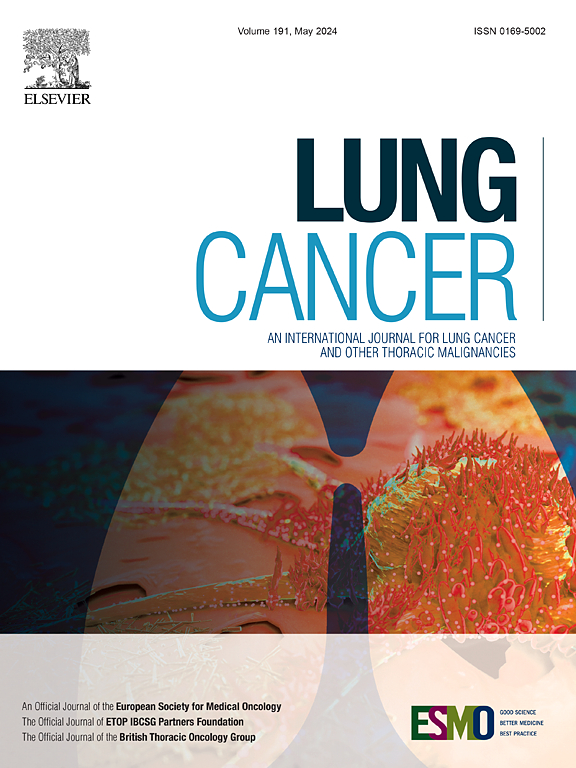Current diagnostic and therapeutical approaches to bone metastases in patients with non-small cell lung cancer: A cross-sectional study
IF 4.5
2区 医学
Q1 ONCOLOGY
引用次数: 0
Abstract
Introduction
The current study aims to investigate the current practice of bone metastasis management in patients with non-small cell lung cancer.
Methods
An online questionnaire was administered to 92 oncologists. A survey was developed and revised by dedicated experts and was composed of five sections: i) general and work characteristics, ii) diagnostic issues, ii) bone-targeted agents issues, iii) radiotherapy issues, and iv) supportive care issues. Descriptive statistics was applied.
Results
The 18F-FDG PET is the preferred evaluation for skeletal assessment for both patients with (62 %) and without (54 %) bone lesions at the CT scan; MRI (63 %) and 18F-FDG PET (61 %) are the most chosen radiographic assessments when a bone oligoprogression is suspected. The number of bone metastatic lesions was the main factor considered when deciding whether to start bone-targeted agents (57 %). In choosing between bone-targeted agents, renal toxicity was the most considered factor (62 %). Over half of the participants did not stop the systemic treatment during stereotactic radiotherapy (68 %) and considered re-irradiation on progressive bone metastases at least 6 months after prior radiotherapy (55 %). Overall, 64 % and 41 % of participants assessed patients’ body weight and physical activity, respectively. Oral nutritional supplements or a specific diet were recommended by 34 % and 46 % of clinicians; 40 % of them also advised their patients to increase their physical activity levels, while 54 % were worried that exercise might increase the risk of skeletal-related adverse events.
Conclusions
Lung-cancer dedicated clinicians pay great attention to bone metastases-related diagnostic, bone-targeted agents, and radiotherapy issues, whereas the integration of supportive care approaches seem less standardized.
非小细胞肺癌患者骨转移的当前诊断和治疗方法:横断面研究
本文章由计算机程序翻译,如有差异,请以英文原文为准。
求助全文
约1分钟内获得全文
求助全文
来源期刊

Lung Cancer
医学-呼吸系统
CiteScore
9.40
自引率
3.80%
发文量
407
审稿时长
25 days
期刊介绍:
Lung Cancer is an international publication covering the clinical, translational and basic science of malignancies of the lung and chest region.Original research articles, early reports, review articles, editorials and correspondence covering the prevention, epidemiology and etiology, basic biology, pathology, clinical assessment, surgery, chemotherapy, radiotherapy, combined treatment modalities, other treatment modalities and outcomes of lung cancer are welcome.
 求助内容:
求助内容: 应助结果提醒方式:
应助结果提醒方式:


